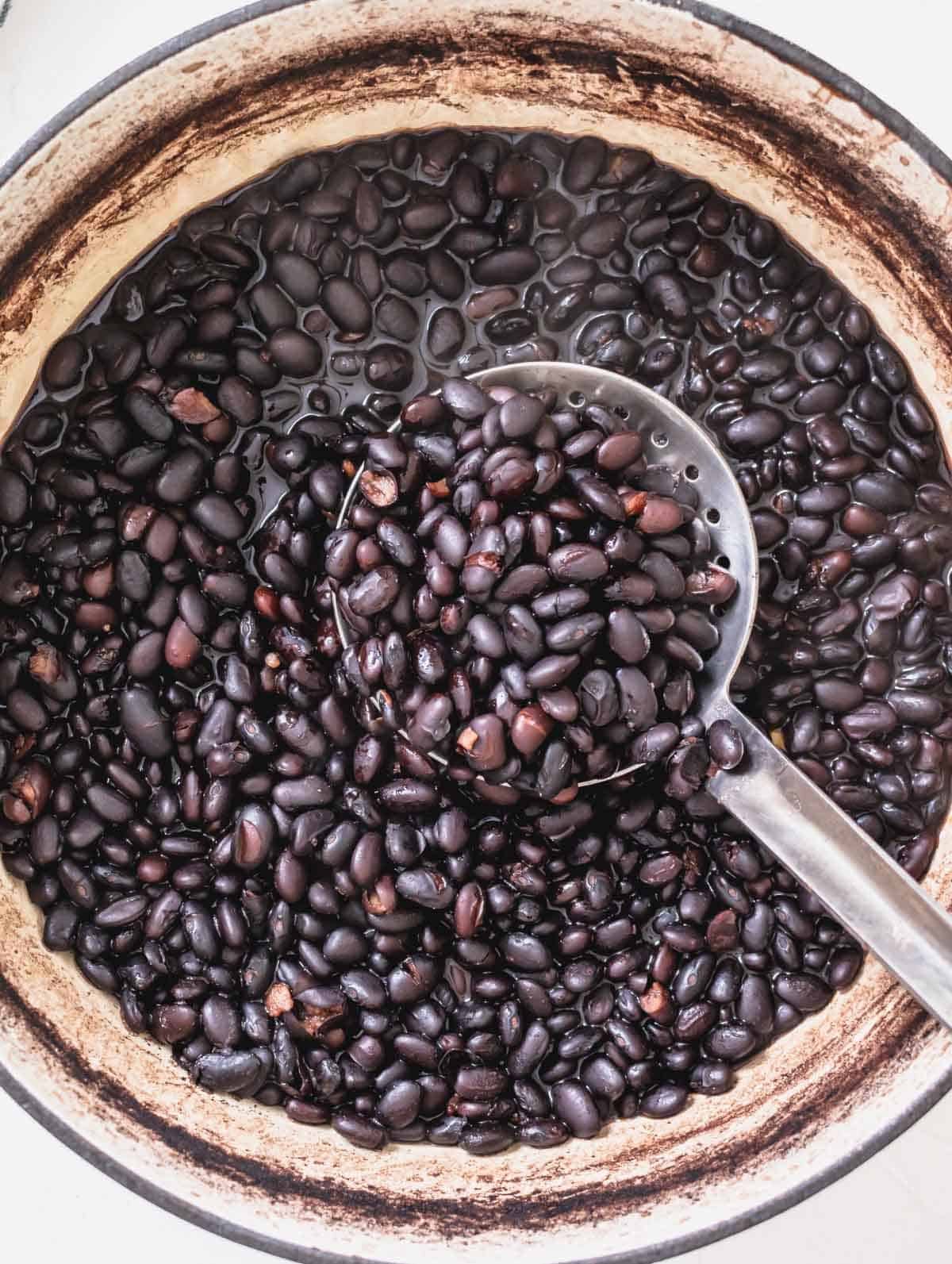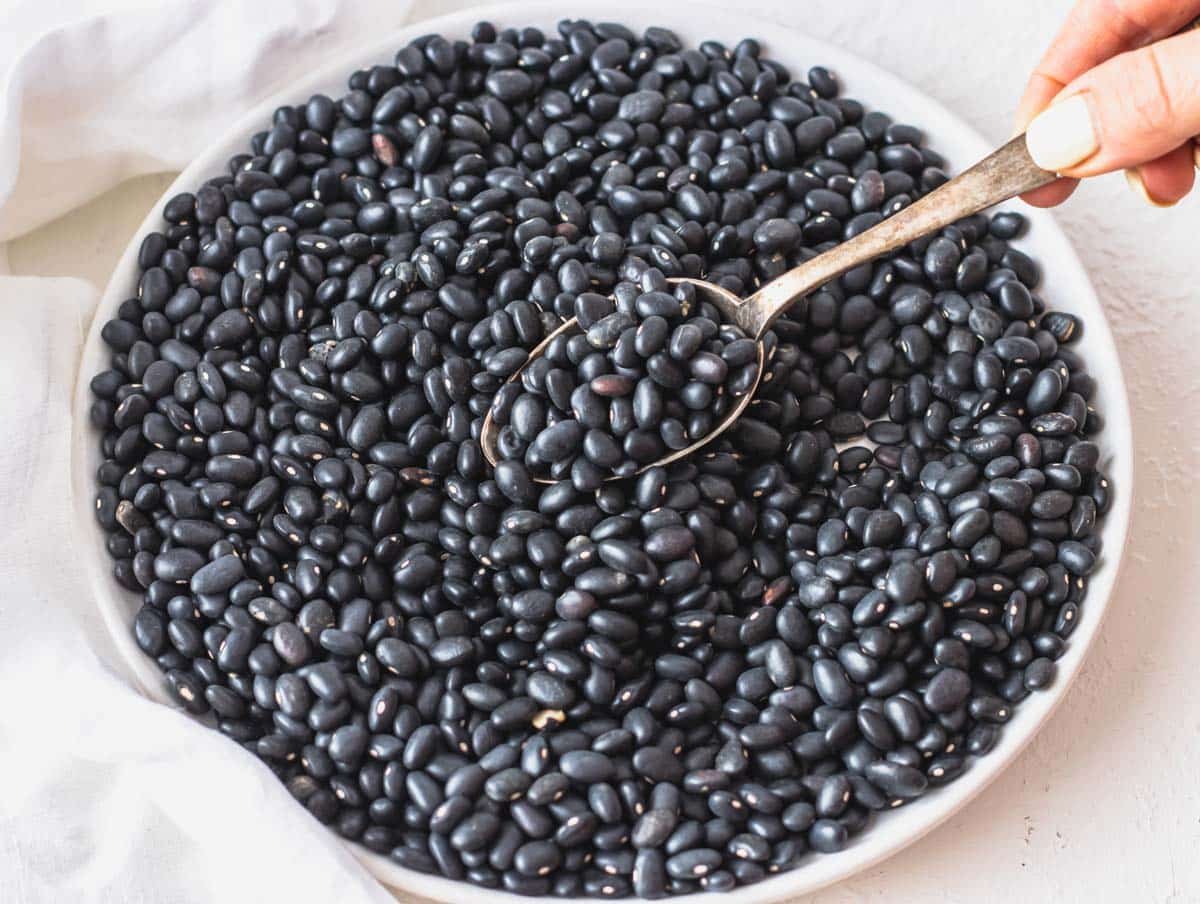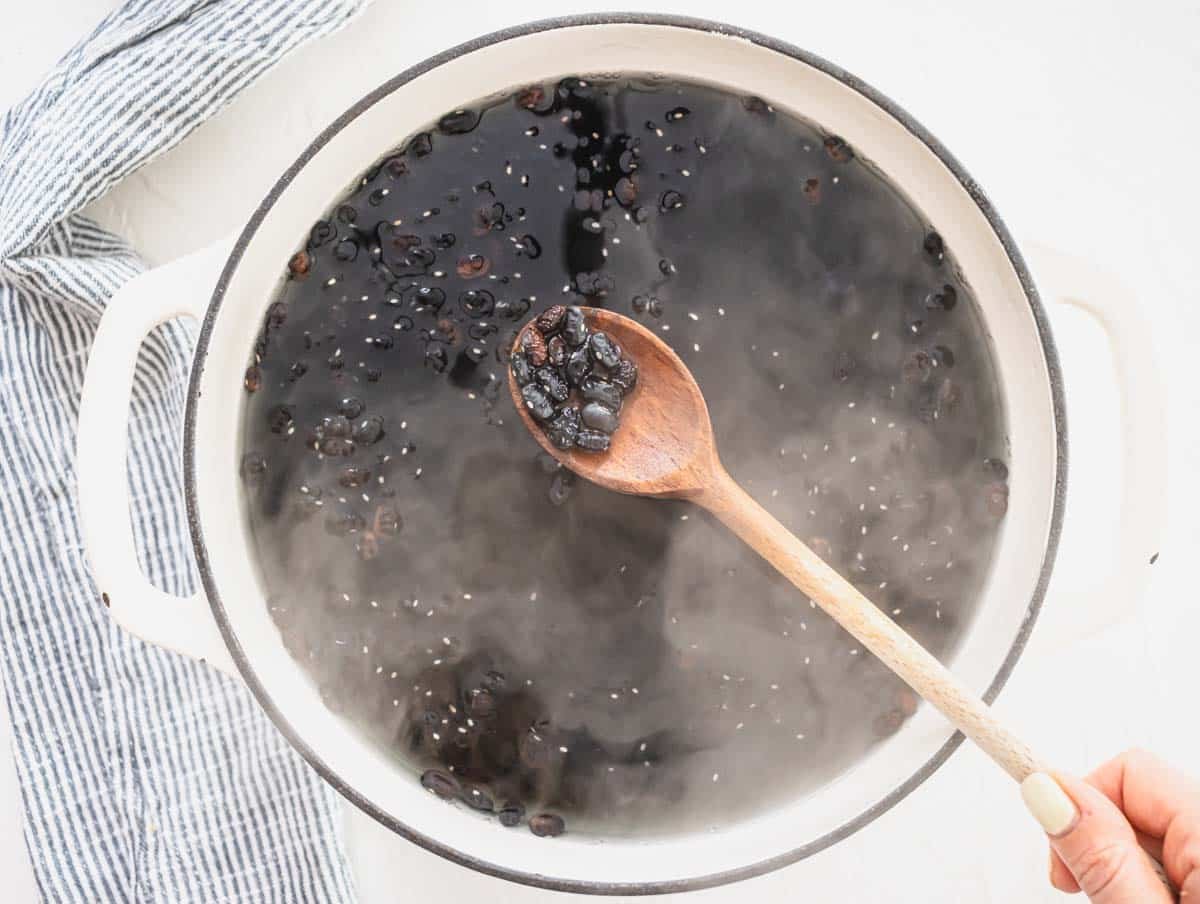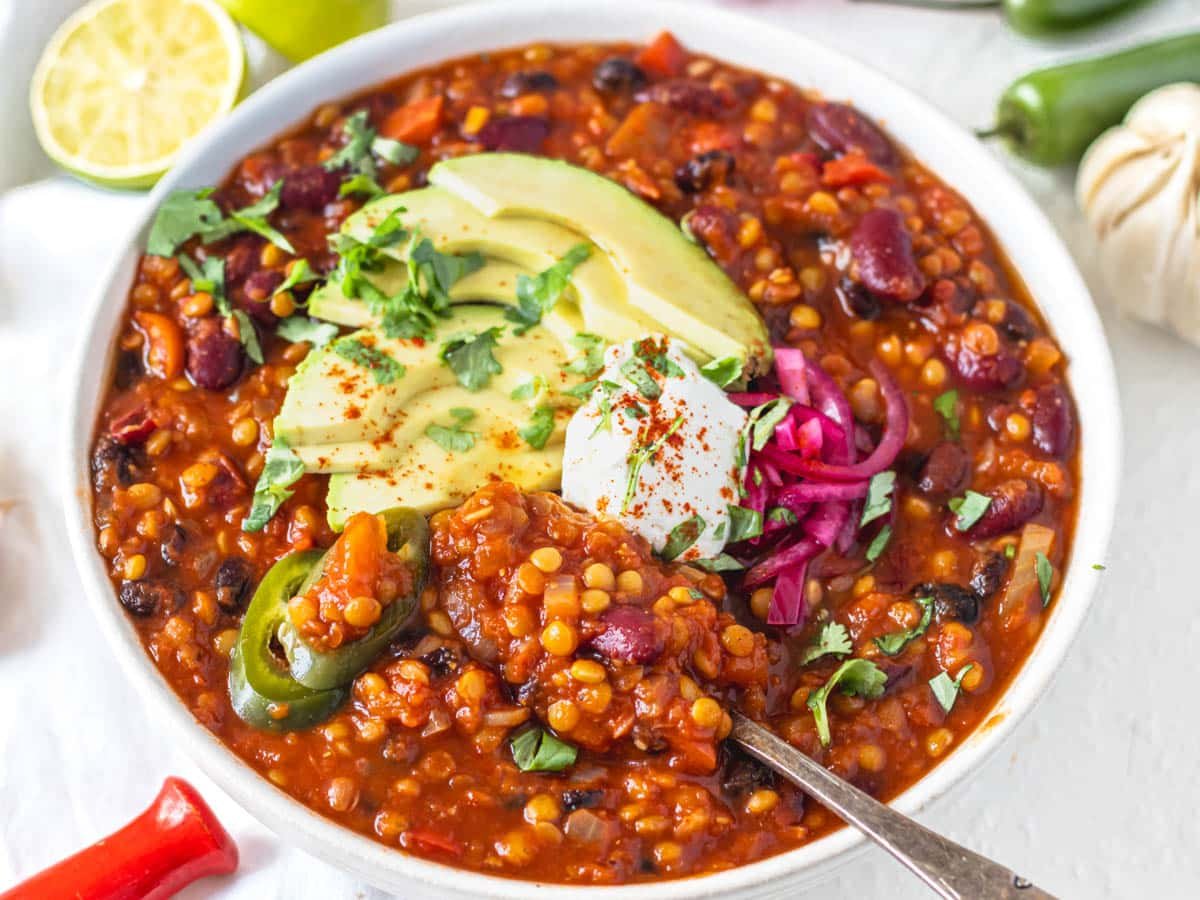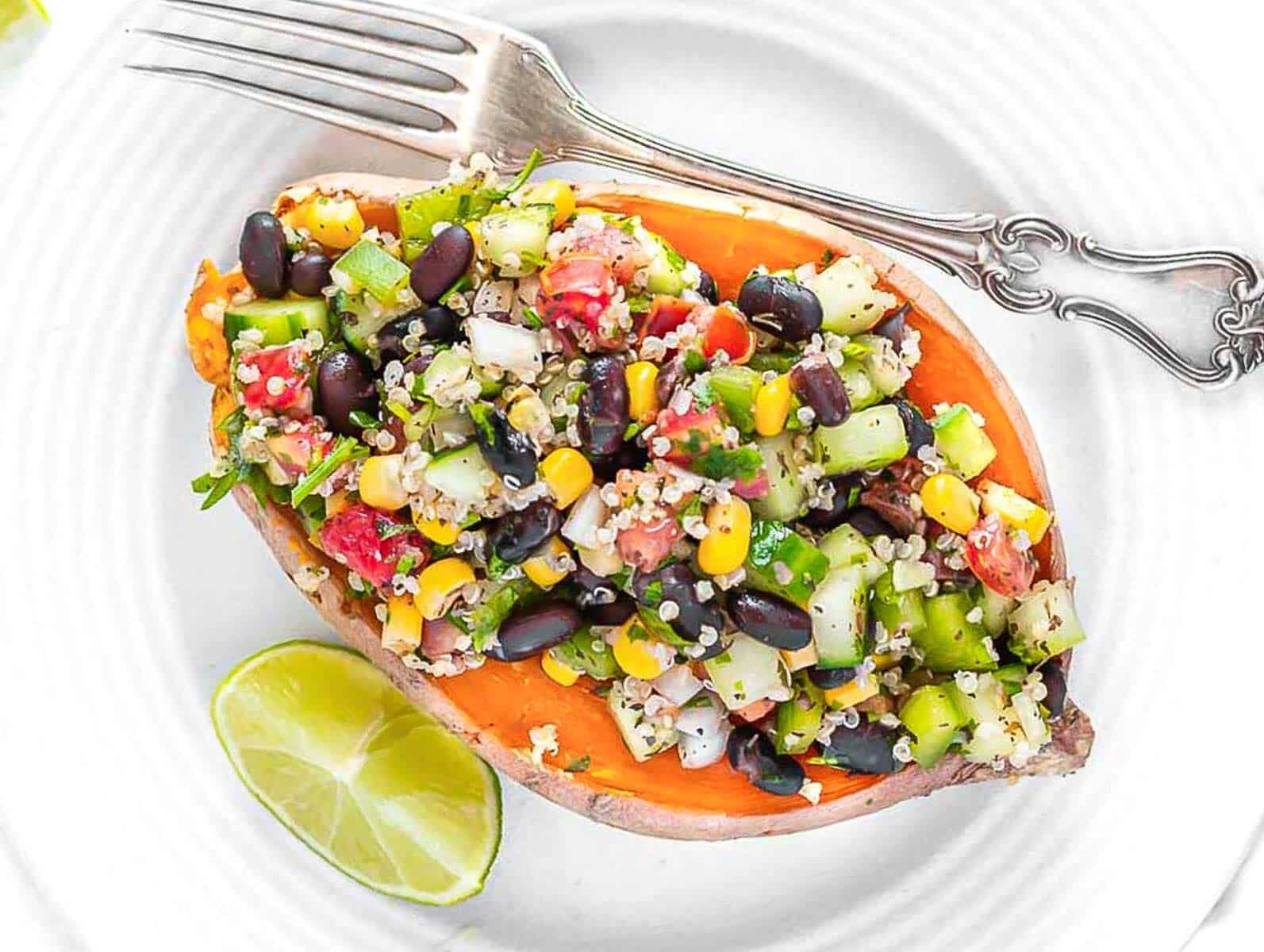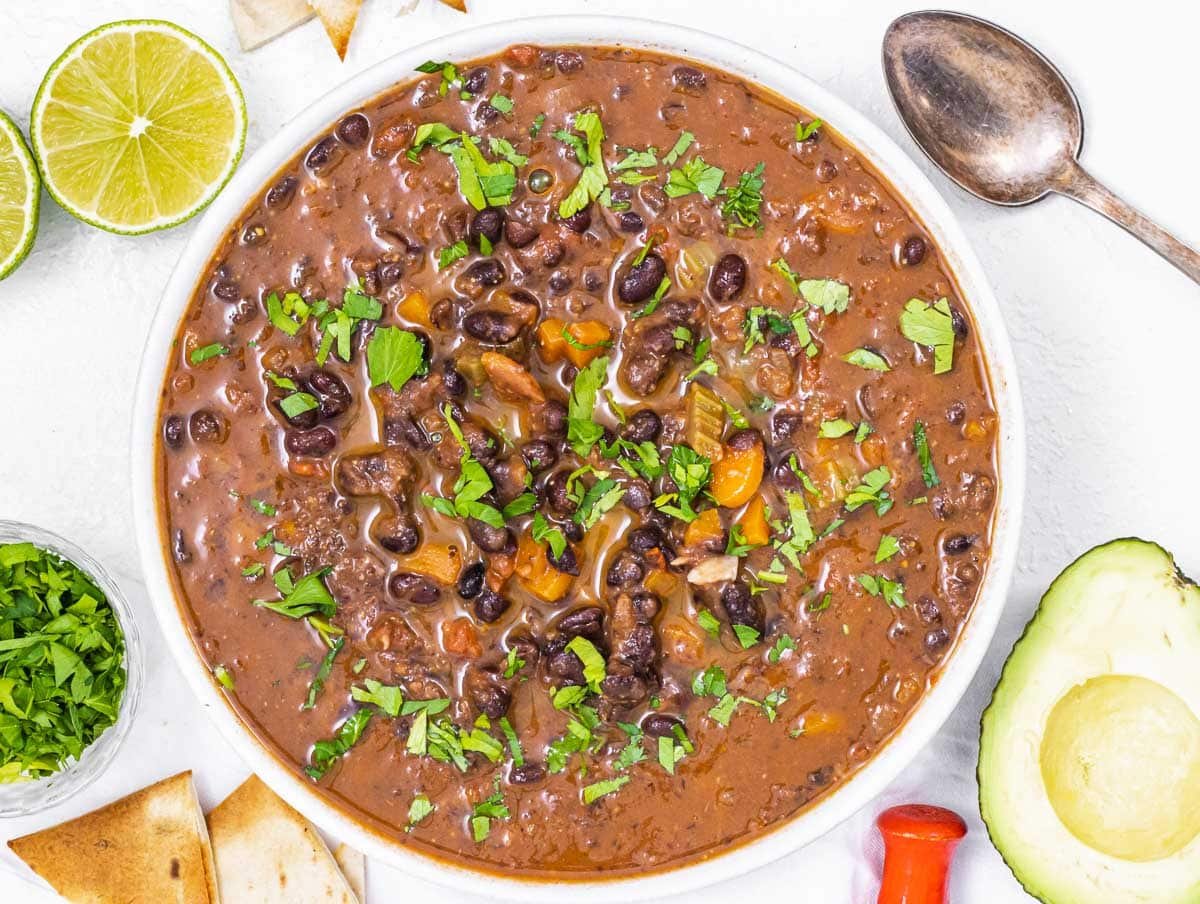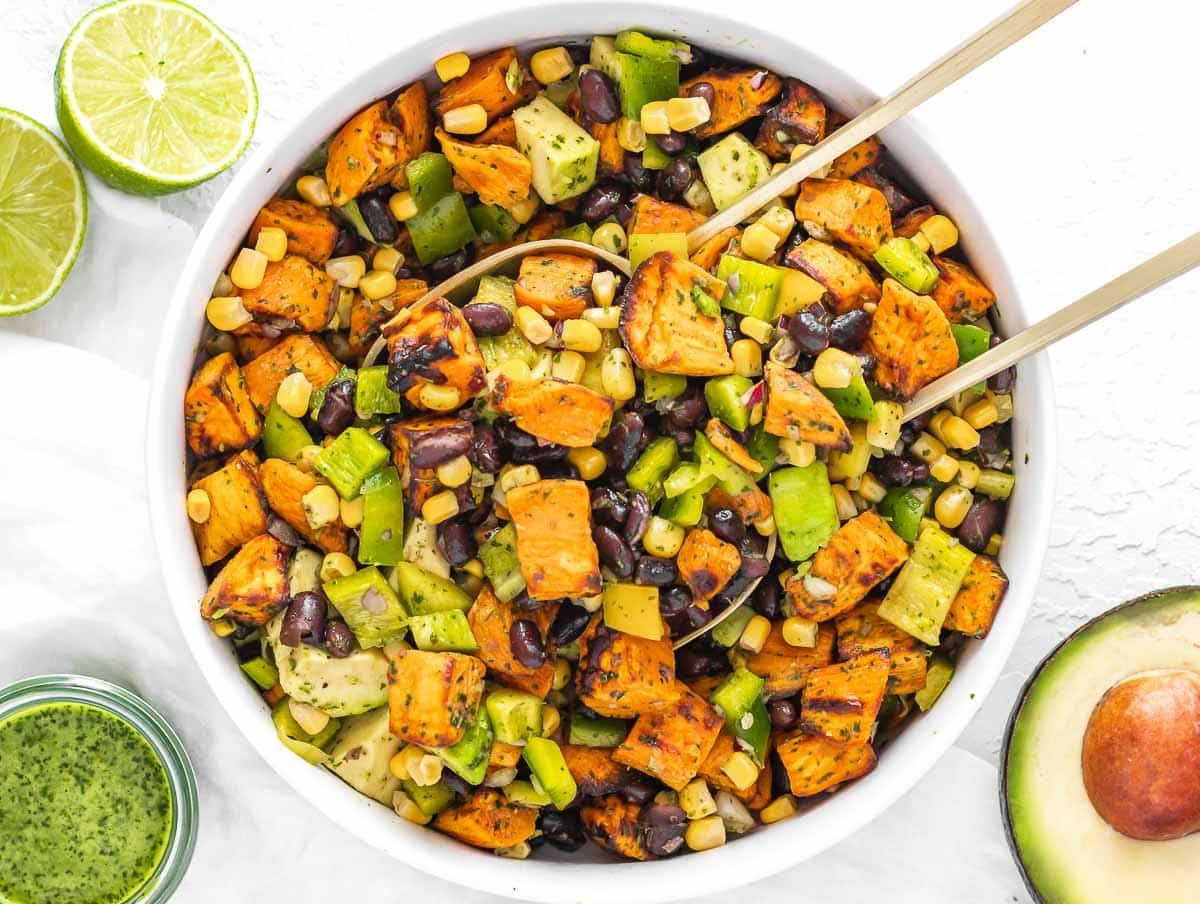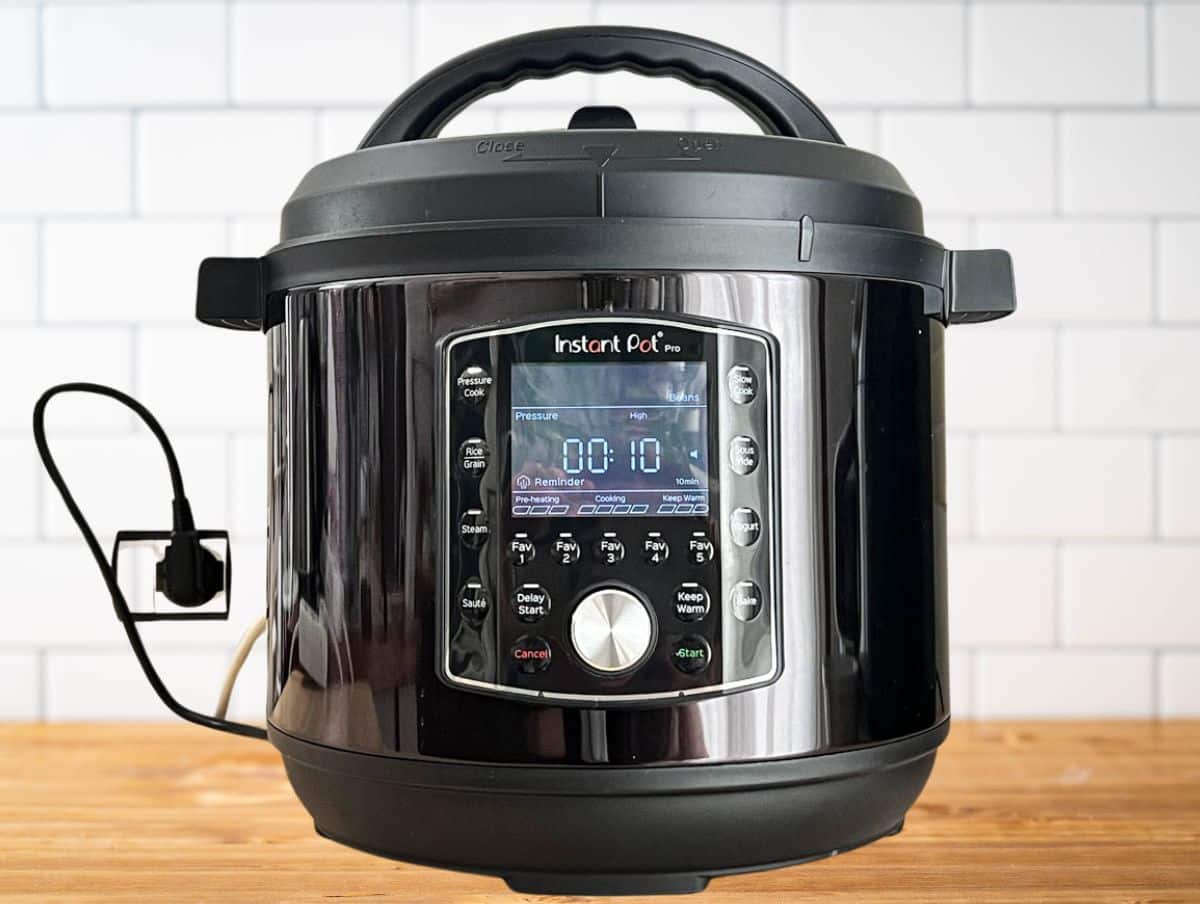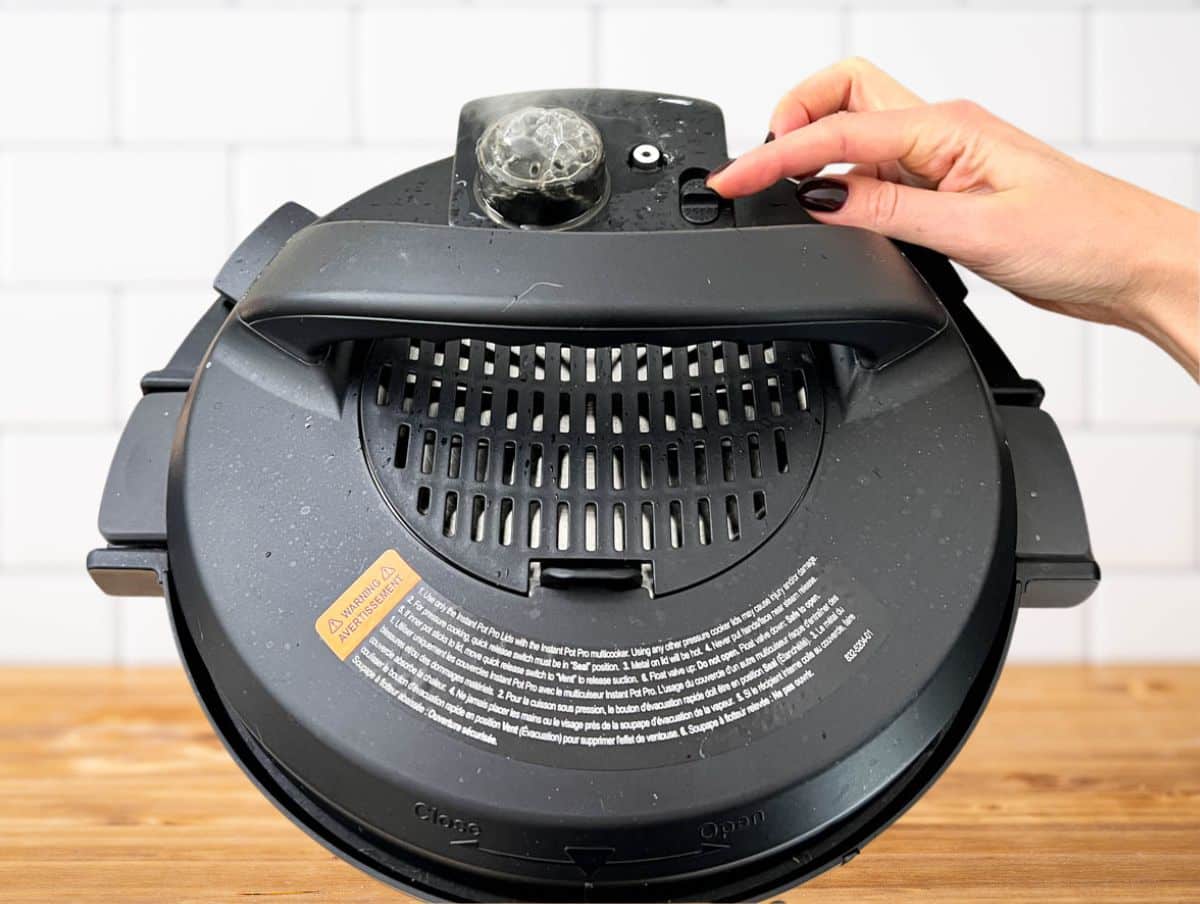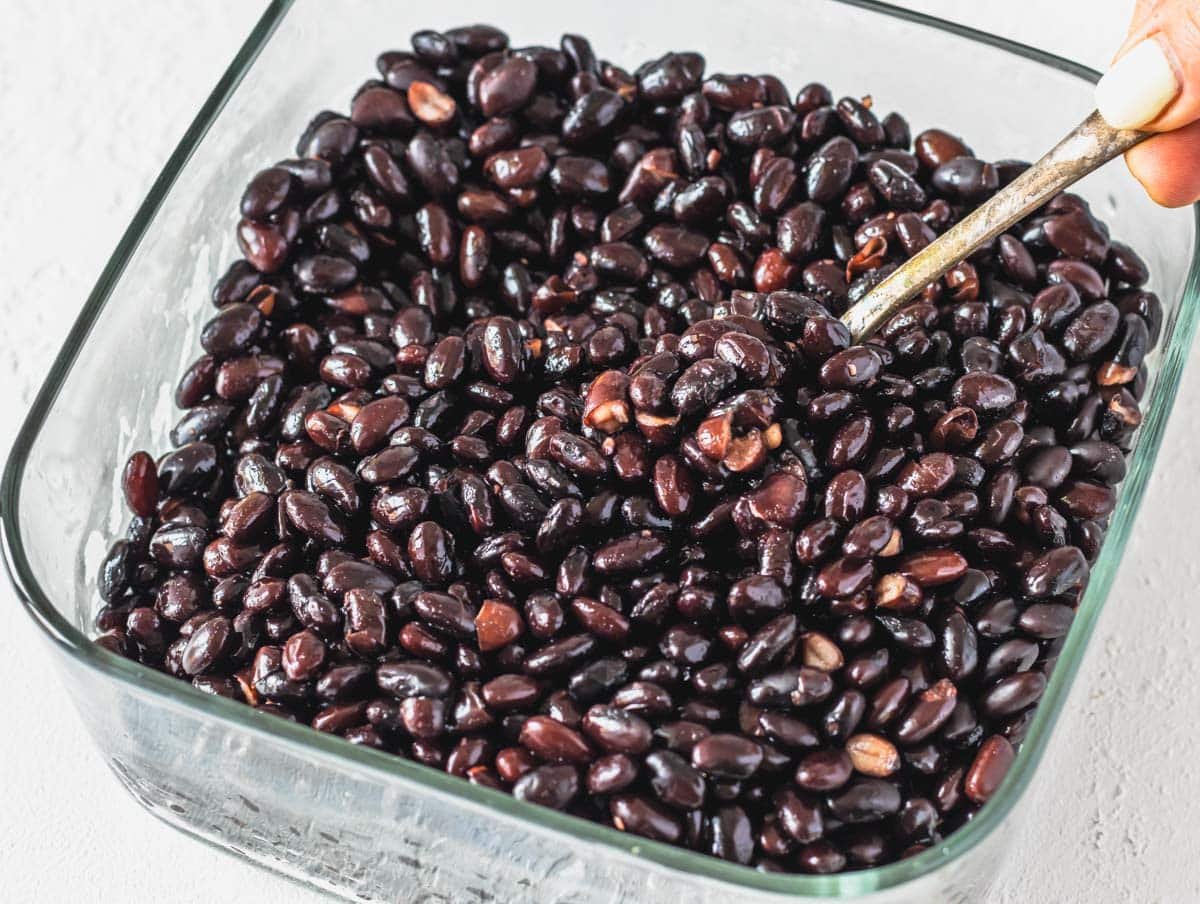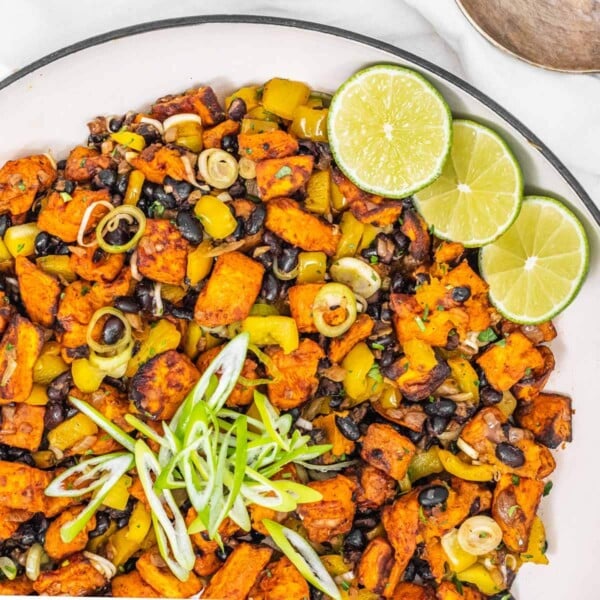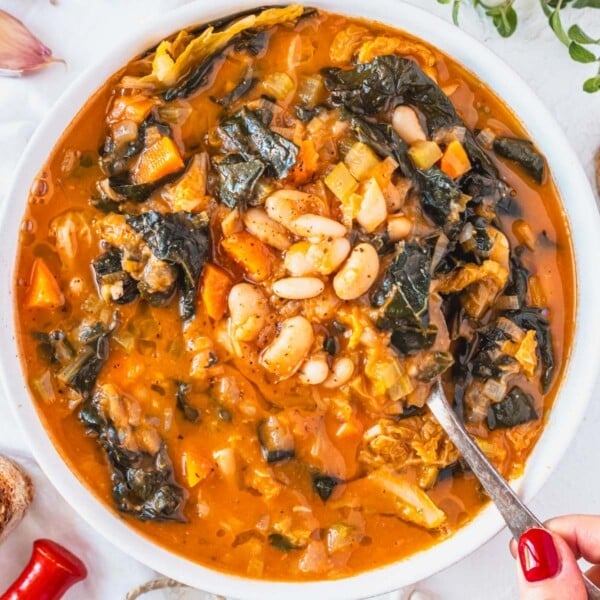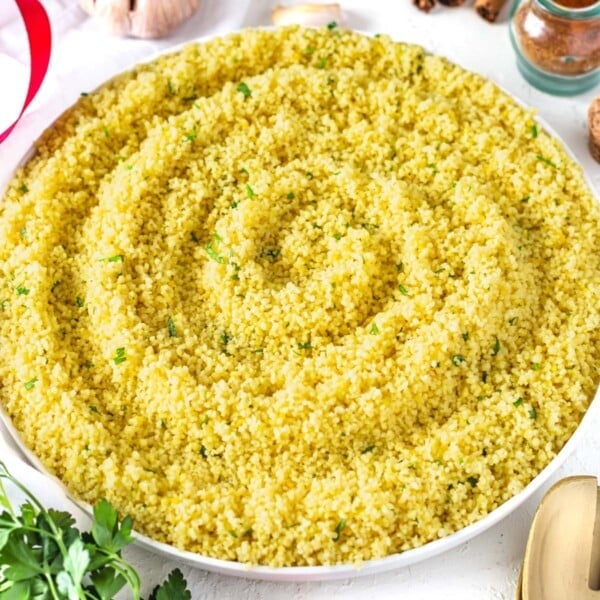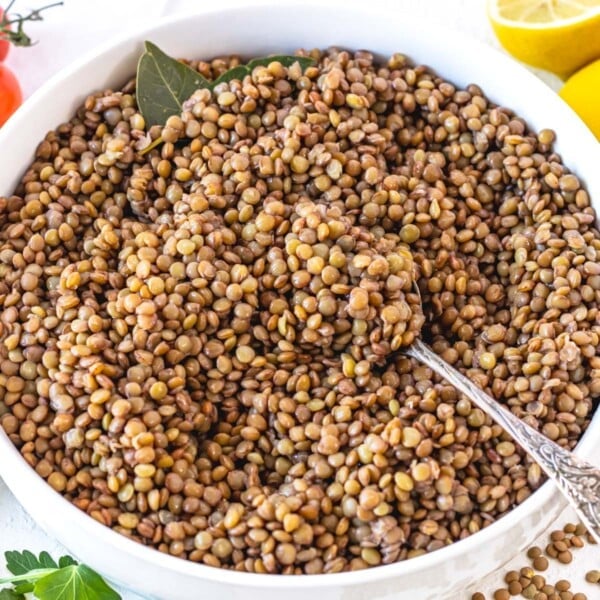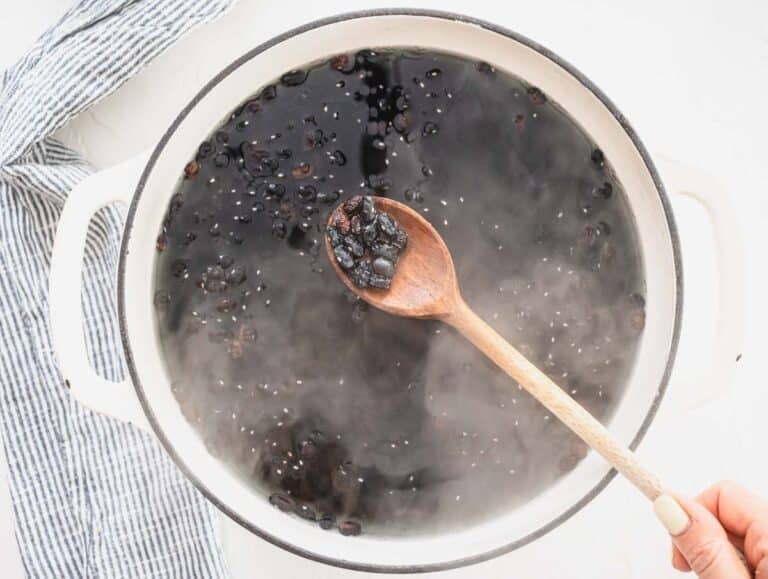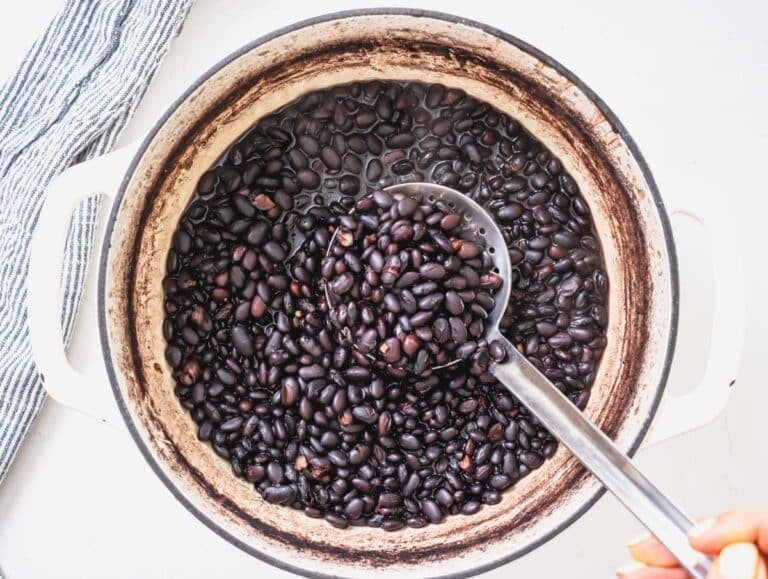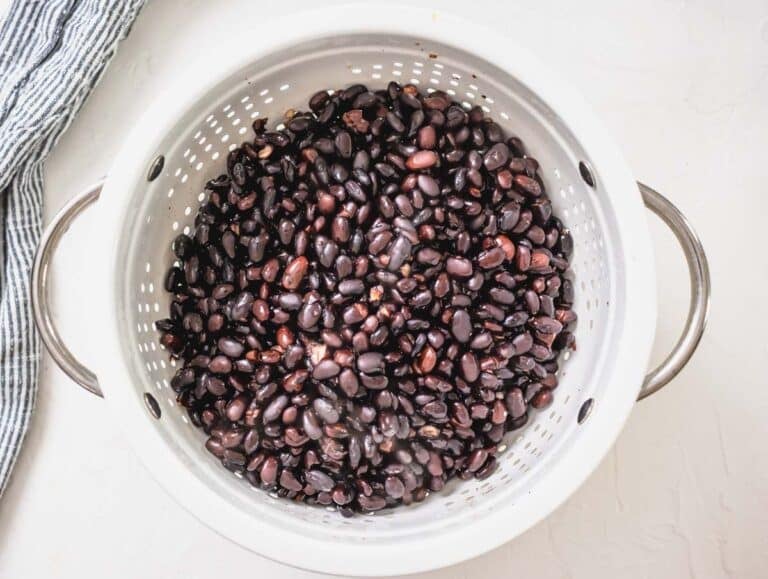Black beans are nutritious and versatile, and you can use them for salads, spreads, dips, and other delicious meals. They are rich in wholesome plant protein and dietary fiber, affordable, and easy to prepare.
How to cook dried black beans + Tips
The following is a basic and universal method of cooking dried black beans and use them as a substitute for canned black beans. The beans will have a neutral flavor and a tender texture, suitable for most black bean recipes.
1. Visual check and rinse.
How to cook black beans in an instant pot?
Storage
Recipes with black beans
Salads with black beans
Stovetop recipes with black beans
More bean recipes
More cooking basics
How to cook lentils How to cook chickpeas How to cook red lentils How to cook black lentils How to cook white beans How to cook couscous
Rinse the black beans under running water to remove dust and debris. Tip: To shorten cooking time, soak the beans in a large bowl covered in cold water overnight.
2. Simmer until tender.
Add them to a large pot and cover with water by about 6 inches or 15 cm. Cover the pot, bring the water to a boil, crack the top open, lower the heat, and simmer until tender, stirring occasionally. Black beans can take 1 to 3 hours to cook, depending on how dry/old they are. After 30 minutes of simmering, add the salt. Tip: To make the beans more flavorful, add herbs, spices, and vegetables to the water. For example, add an onion cut in half, 1/2 teaspoon of cumin, and two bay leaves. The beans will acquire a wonderful earthy, sweet, and aromatic flavor. To check for doneness, you can taste the beans or press one between your thumb and index finger. The beans should mash easily and be tender. Tip: If you are using black beans to make a spread, dip, or sauce, try adding one teaspoon of baking soda to the cooking water. This will tenderize the beans’ skin, making them ultra creamy as you bend them.
3. Drain and use or store.
If you are using the beans immediately, you can drain them and serve them as a simple side dish, or you can use them to make delicious salads, soups, pasta dishes, patties, and many other recipes. If you want to store them, reserve the cooking water and keep reading. However, soaking has some advantages, and you might want to consider doing so. Here are some of the main benefits of soaking black beans before cooking them: To soak the black beans, rinse them and add them to a large pot or bowl. Cover with plenty of cold water by at least 3 inches or 8 cm. Cover with a cloth and keep at room temperature for 8 to 24 hours. Keep the beans in the refrigerator if soaking for more than 24 hours. The main problem with an instant pot is that you can’t adjust the cooking time as the beans cook because the pot is sealed. This means you’ll have to guess the cooking time; in most cases, the beans will be undercooked or overcooked. If the beans are undercooked, you’ll have to re-pressurize the pot, which takes time and effort. While cooking the beans on the stovetop takes longer, it’s easier and hands-off, so we recommend it. However, if you want to scratch your itch and try it anyway, here’s our recommended method for cooking black beans in an instant pot. Cover with water by 1.5 inches or 4 cm. Season with salt and, optionally, your favorite herbs and spices. Close the lid and pressure cook on high for about 20 – 25 minutes. Peeps, cooking time varies depending on the beans’ size and how long they have been sitting in your pantry. Larger and drier beans take longer than 20 minutes. Manually release the steam, carefully remove the lid, and you should be done. If the beans are not fully cooked, you can either finish cooking them on the stovetop or re-pressurize the pot and cook in 5-minute increments. Tip: Select bean mode if you are using an instant pot. Alternatively, go to “custom mode,” high pressure, set time to 10 minutes, and no reminder. Freezer: Let the black beans cool to room temperature. Drain them and transfer them to a freezer-friendly container or plastic bag. You can freeze individual portions if you prefer. Pop the bags in the freezer for up to 3 months. Defrost: Thawing depends on the recipe. If you add beans to cold dishes like salads, spreads, or patties, you might want to defrost them in the microwave before using them or in the fridge for several hours. If you use the beans in warm recipes, like soups and sauces, you add them frozen.
Black Bean Soup
Lentil Chili
Sweet Potato Hash
Vegan Breakfast Burrito
Tuscan White Bean Soup
Pasta e Fagioli
30 Bean Recipes (easy meals)
White Bean Salad
How to cook couscous
How to Cook Black Lentils
How to Cook Red Lentils
How to Cook Lentils
30 High Protein Vegetarian Meals
40 Easy Meatless Meals
Mediterranean Diet Recipes
45 Easy Vegetarian Dinner Recipes
